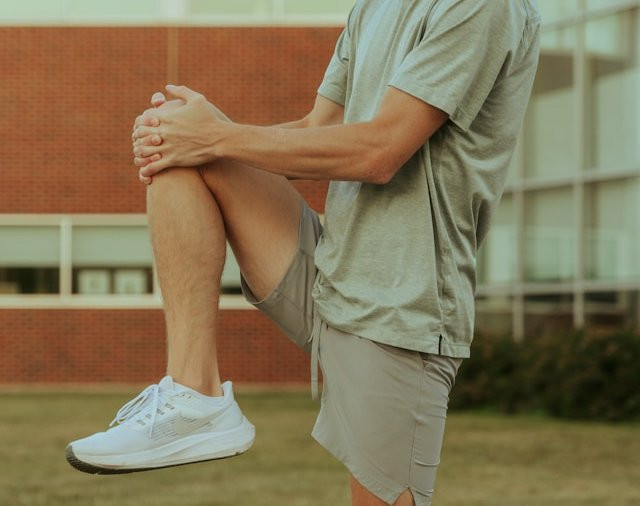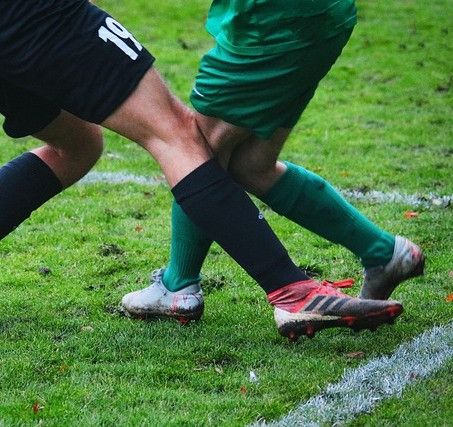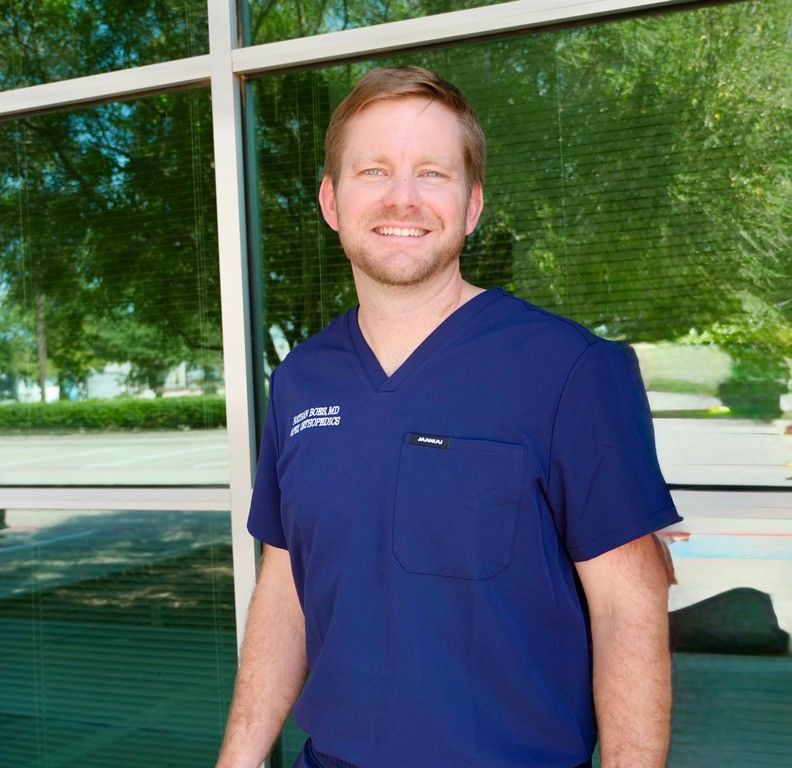Knee pain limits everything—from stairs and workouts to daily routines. Nathan Boes, MD is a board-certified orthopedic surgeon, fellowship-trained in Sports Medicine, providing comprehensive knee care to patients in Frisco and the North Dallas area. Dr. Boes prioritizes conservative care first, reserving surgery for cases where it clearly restores function and long-term joint health.
Caring for patients from Frisco, Plano, McKinney, Allen, Prosper, Little Elm, The Colony, and across North Dallas/DFW.

Common Knee-Related Conditions & Injuries
Anterior cruciate ligament injury with instability, pivoting “give-way,” or swelling.
Focal chondral defects causing catching, swelling, or activity-related pain.
Injuries involving ACL, PCL, MCL, LCL/PLC with varying instability patterns.
Inner-knee ligament sprain/tear; often treated non-surgically, surgery in select cases.
Loss of meniscal tissue after prior tear/surgery leading to overload and pain.
Acute or degenerative tear causing locking, catching, or joint-line pain.
Combined injuries (e.g., ACL + MCL/PLC) often from high-energy trauma.
Kneecap tracking/overload with stairs, squats, or prolonged sitting.
Posterior cruciate ligament tear causing posterior sag or instability.
Joint surface fracture requiring precise alignment and rehab.
Knee-Related Treatments & Procedures
Arthroscopy & Meniscus/Cartilage
- Arthroscopy — camera-guided treatment for meniscus, cartilage, and loose bodies.
- Meniscus Surgery — repair or partial meniscectomy based on tear type/zone.
- Meniscus Repair — Revision — corrective repair for persistent/recurrent tears.
- Meniscal Transplantation — graft replacement in meniscus-deficient knees for select candidates.
- Articular Cartilage Treatment / Cartilage Restoration — techniques (e.g., microfracture, osteochondral grafts, cell-based options where appropriate) to address focal defects.
- Arthrofibrosis Treatment — targeted therapy and, when needed, arthroscopic lysis of adhesions to restore motion.
Ligament & Alignment
- ACL Reconstruction — graft-based stabilization for pivoting instability.
- ACL Reconstruction — Revision — corrective strategy for failed prior ACL surgery.
- PCL Reconstruction — restores posterior stability when non-operative care isn’t sufficient.
- Ligament Repair — primary repair for select acute tears when indicated.
- MCL Reconstruction — reconstructive stabilization for persistent valgus laxity.
- LCL & Posterolateral Corner Repair — addresses anterolateral/varus instability patterns.
- Multi-Ligament Reconstruction — staged or single-stage approach for complex instability.
- Osteotomy — realignment procedure (varus/valgus) to unload worn compartments and protect cartilage/ligament reconstructions.
- Patellofemoral Realignment — soft-tissue/bony procedures to improve kneecap tracking and reduce instability.
Arthritis & Joint Preservation
- Osteoarthritis Knee Treatment — non-surgical strategies (therapy, activity modification, bracing, injections) and joint-preserving options.
- Patellofemoral Arthroplasty — resurfacing for isolated kneecap arthritis in carefully selected patients.
Personalized Treatment Plans for Every Patient
Evaluation & Diagnosis
- Focused history and hands-on exam to pinpoint pain source and instability pattern
- X-rays for alignment and joint space; MRI for meniscus, cartilage, and ligament assessment when indicated
- Clear discussion of findings with a step-wise plan tailored to your sport, job, and goals
Non-Surgical Care Comes First
- Activity modification & progressive physical therapy for strength, control, and mobility
- Bracing/taping strategies; RICE and structured return-to-activity plans
- Anti-inflammatory strategies as appropriate; injections when indicated
- Education on alignment, mechanics, and prevention to reduce recurrence
Surgical Expertise (When Needed)
When pain, mechanical symptoms, or instability persist, Dr. Boes offers evidence-based surgical solutions that pair modern techniques with a detailed rehab plan—especially for athletes and active adults.


